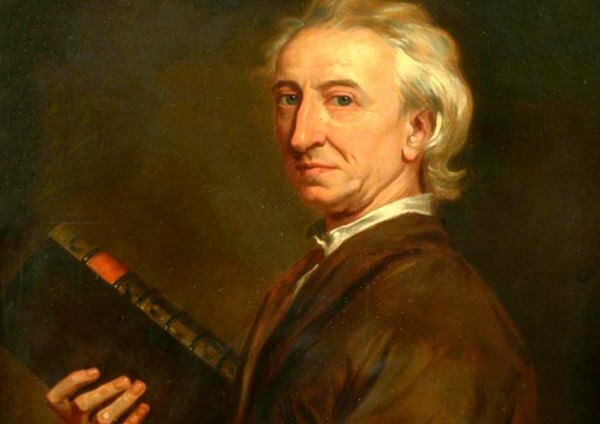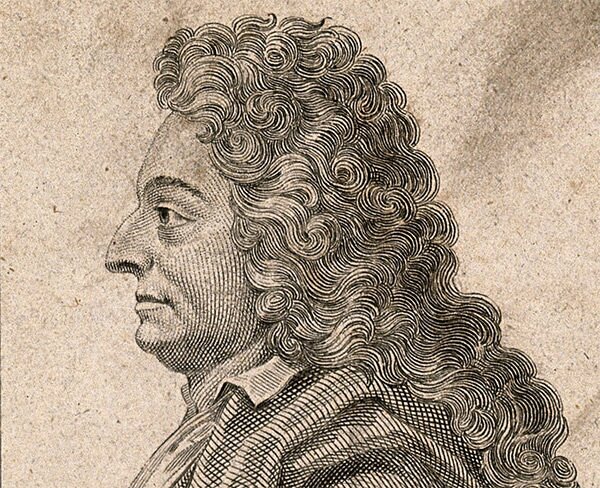Introduction
The inferno rendered around 80% of the population of the City homeless. Here we provide key facts about some of the people involved in the Great Fire of London. Click the links below to jump straight to the people listed.
Thomas Farriner
Thomas Farriner was the owner of the bakery on Pudding Lane where the fire started. He was ‘Conduct of the King’s Bakehouse’, contracted to produce ships biscuit for the navy, who were then fighting the Anglo-Dutch war.
Born: c.1615
Died: 20 Dec 1670
Age at time of fire: c.51
09 Jul 1637 – the date Farriner married Hanna Matthews.
1665 – the year Hanna died, leaving Thomas a widower.
3 – the number of children born to Thomas and Hannah (Thomas (d.1677), Hanna (1643-71), and Mary (dates unknown).
Did You Know?
Pudding Lane is said to have got its name from the medieval word for entrails and organs (“puddings”), which would fall from the butchers’ carts as they were being pulled from Eastcheap to the waste barges on the River Thames.
5 – the number of fireplaces in Thomas Farriner’s home.
1 – the number of ovens in the bakery.
7,000 lb – the weight of ships biscuit being sent from the naval yards each week, including that produced by Thomas Farriner.
20 January 1668 – the date that work on rebuilding the house and bakery on Pudding Lane commenced; Thomas and Hannah moved back in during the summer.
EC3R 8BQ – modern postcode of Pudding Lane.
Did You Know?
Thomas Farriner was in the crowd at Robert Hubert’s execution.
4 – the number of years after the fire that Thomas died.
£400 – the amount Thomas bequeathed to each of his daughters, to be paid in £100 installments over 4 years. Barring a few small bequests, the rest of his estate was left to his son, Thomas.
Samuel Pepys
Samuel Pepys was a naval official and also a prolific diarist. He stayed in and around the City throughout the disaster and his diaries provide us with the most complete account of the tragedy.

Above: Portrait of Samuel Pepys by Sir Godfrey Kneller, 1689 (image via Wikimedia Commons).
Born: 23 February 1633
Died: 26 May 1703
Age at time of fire: 33
3:00 a.m. – the time that Pepys was first woken by a maid on the Sunday morning, to tell him of the fire. Seeing the flames were at the lower end of the neighbouring street, Pepys back to bed.
33 – the age of Samuel Pepys (1633–1703) at the time of the Great Fire.
1/4 mile – the distance between Pudding Lane and Pepys home on Seething Lane.
31 May 1669 – the date of the last diary entry, Pepys having to give up writing his journal due to failing eyesight. In his final entry he expressed an intention to dictate his diary so others could write it for him, but he never did this.
Did You Know?
Pepys, whose diary offers us some of the most detailed information about the fire, wrote most entries in a form of shorthand called Tachygraphy, a code which was not translated until over 150 years later, when the Reverend John Smith spent 3 years transcribing the diaries into plain English (from 1819 to 1822).
1,250,000 – the approximate number of words in his diaries.
3,000 – the approximate number of pages.
54 – the number of blank pages left in the last journal.
John Evelyn

Above: Detail from a portrait of John Evelyn by Sir Godfrey Kneller, 1689 (image via Wikimedia Commons).
Born: 31 October 1620
Died: 27 February 1706
Age at time of fire: 45
4 miles – the distance (6 km) that Evelyn lived from the city, in Deptford.
Robert Hooke

Above: A modern artist impression of Robert Hooke, painted by Rita Greer, 2004 (image via Wikimedia Commons).
Born: 28 July 1635
Died: 3 March 1703
Age at time of fire: 31
Did You Know?
Hooke was once described as the ‘English Leonardo’ and was a scientist of great intellect. Among his many legacies is the original observation that plants have a cellular structure – in fact he coined the term ‘cell’ as it relates to biology.
Christopher Wren

Above: Detail from an engraving of Sir Christopher Wren, by A. W. Warren, date unknown (file from Wellcome Images by Wellcome Trust, a global charitable foundation based in the United Kingdom).
Born: 20 October 1632
Died: 25 February 1723
Age at time of fire: 33
1673 – the year Wren was honoured for his work rebuilding London, receiving a knighthood and becoming Sir Christopher Wren.
Scarce ever met in one man, in so great a perfection, such a mechanical hand; and so philosophical a mind. – Robert Hooke, describing Wren.
King Charles II
Charles was king of England at the time. He had been unpopular amongst many Londoners but his close involvement during the Great Fire helped his reputation in many quarters.

Above: © Trustees of the British Museum.
Born: 29 May 1630
Died: 06 February 1685
Age at time of fire: 36
1660 – the year Charles II came to the throne, following the end of the civil wars and the Cromwell government.
Did You Know?
King John Charles II commanded little respect prior to the Great Fire, considered debauched and a drunkard. During and immediately after the fire, however, he showed leadership and kingship, working to limit the damage from the fires and then to ensure the homeless were fed. Some believe he was possibly motivated by a desire to save his own palace and for fear of an uprising.
Thomas Bludworth
Bludworth was Lord Mayor of London at the time of the fire. His involvement in the disaster came under much criticism, due to his dithering, cowardice and lack of leadership.
Born: c. February 1620 (baptised 13 February 1620)
Died: 12 May 1682
Age at time of fire: 46
Did You Know?
Bludworth appears to have left the city by Monday, as no accounts of the firefighting efforts thereafter make mention of him.
3 – having suddenly left, the number of days before Bludworth was again seen on the streets of the City.
October 1665 – the month Bludworth became Lord Mayor.
1 month – the time after the Great Fire that Bludworth’s spell as Lord Mayor of London came to an end.
Did You Know?
An ancient law of the city declared that if a man destroyed another’s house he would be responsible for the cost of rebuilding it. Bludworth may have been waiting for authority from the king, so as to relinquish himself of this responsibility.